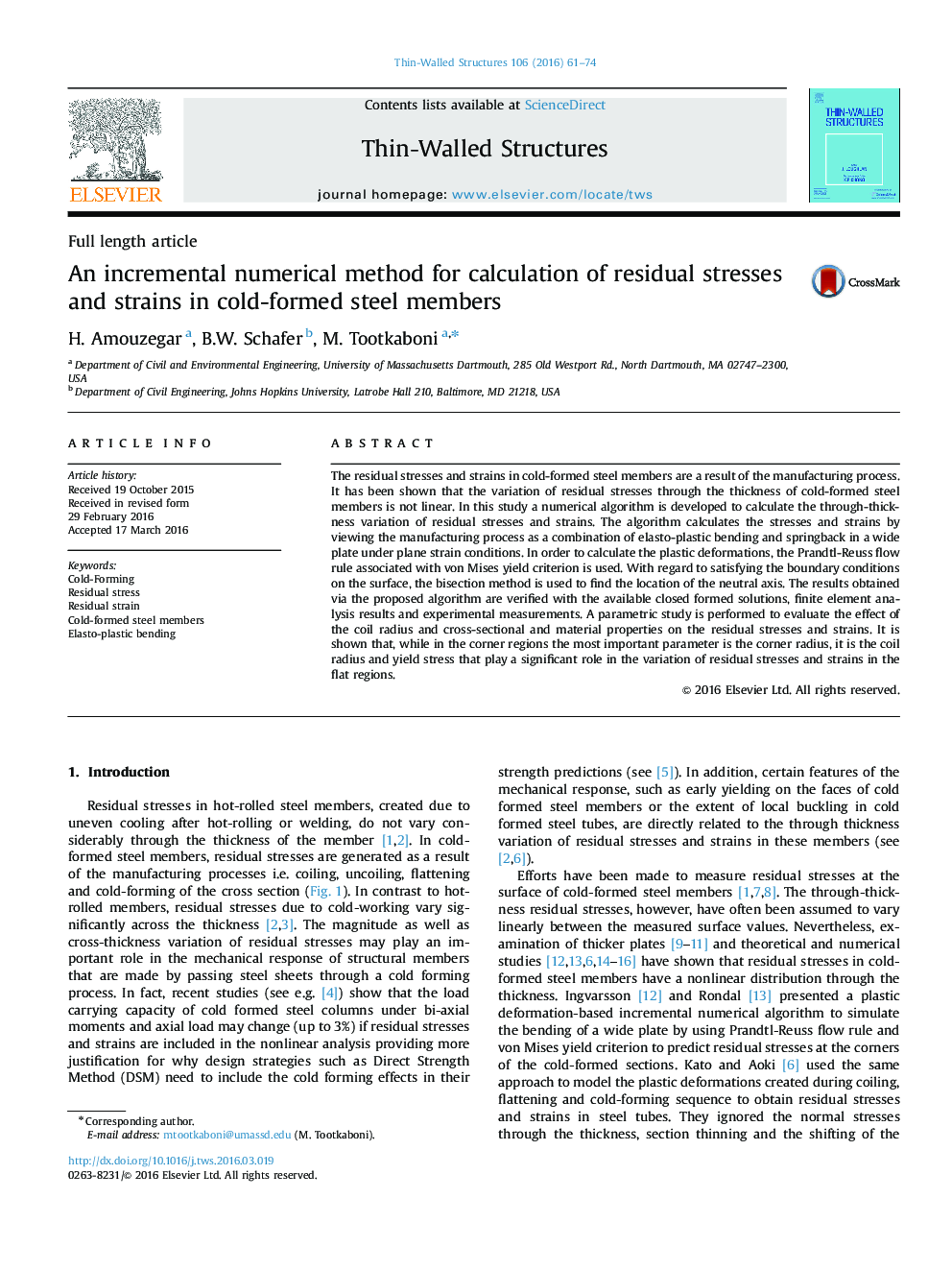| Article ID | Journal | Published Year | Pages | File Type |
|---|---|---|---|---|
| 308314 | Thin-Walled Structures | 2016 | 14 Pages |
•A method is proposed to obtain the residual stresses and strains from cold-forming.•Cold-forming is modeled as a set of elastoplastic and springback deformations.•Results are verified with finite element modeling and experimental measurements.•Plasticity is modeled through Prandtl-Reuss flow rule and von Mises yield criterion.•A parametric study is performed on the variability in residual stresses and strains.
The residual stresses and strains in cold-formed steel members are a result of the manufacturing process. It has been shown that the variation of residual stresses through the thickness of cold-formed steel members is not linear. In this study a numerical algorithm is developed to calculate the through-thickness variation of residual stresses and strains. The algorithm calculates the stresses and strains by viewing the manufacturing process as a combination of elasto-plastic bending and springback in a wide plate under plane strain conditions. In order to calculate the plastic deformations, the Prandtl-Reuss flow rule associated with von Mises yield criterion is used. With regard to satisfying the boundary conditions on the surface, the bisection method is used to find the location of the neutral axis. The results obtained via the proposed algorithm are verified with the available closed formed solutions, finite element analysis results and experimental measurements. A parametric study is performed to evaluate the effect of the coil radius and cross-sectional and material properties on the residual stresses and strains. It is shown that, while in the corner regions the most important parameter is the corner radius, it is the coil radius and yield stress that play a significant role in the variation of residual stresses and strains in the flat regions.
